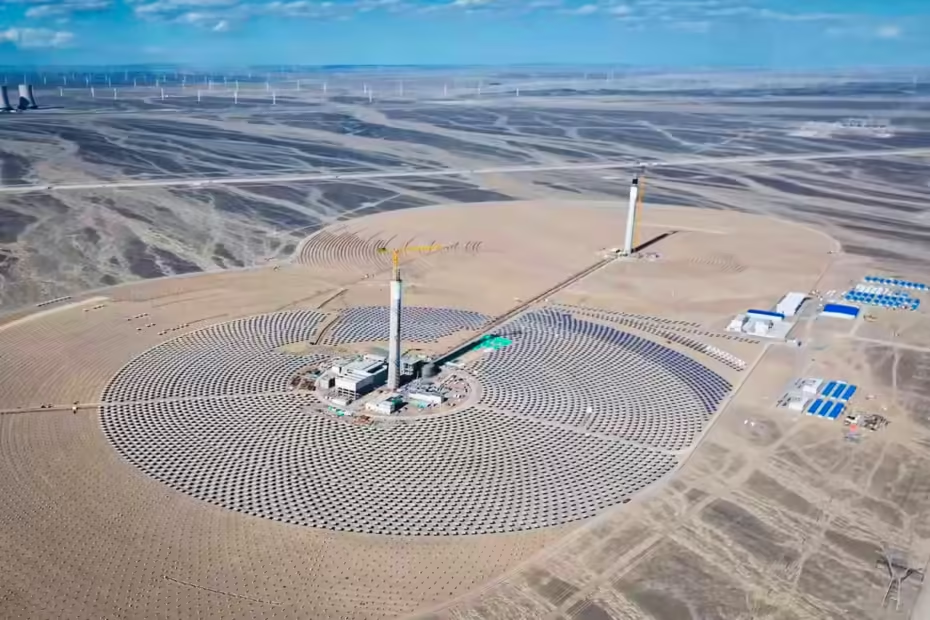Two 650-foot-tall (200-m) towers have risen in China’s Gansu Province. Combined with an array of 30,000 mirrors arranged in concentric circles, the new facility is expected to generate over 1.8 billion kilowatt-hours of electricity every year.
While photovoltaic panels that directly convert sunlight to electricity are what most people think of when they hear the term “solar power,” there is another method of harvesting the Sun’s power that’s been steadily developing since the early 1980s. Known as solar thermal or concentrated solar power (CSP), these systems rely on mirrors known as heliostats to bounce sunlight to a central gathering point. There, the concentrated beams heat a transfer fluid that in turn heats a working fluid. This fluid then evaporates, turns a turbine, and generates electricity.
MORE STORIES

China plans to deflect near-Earth asteroid in 2030

Massive Australia-to-Singapore clean energy cable gets green light
In 2014, what was then the world’s largest solar thermal power station opened in the Mojave Desert in the United States. Known as the Ivanpah Solar Electric Generating System, the facility consists of three different towers surrounded by heliostat arrays and has a capacity of 392 megawatts. In 2017, Australia announced that it was building the world’s largest single-tower solar thermal power plant with a proposed output of 150 megawatts, although that project was ultimately killed in 2019. The world’s largest CSP, the Noor Complex Solar Power Plant, now operates in the Sahara Desert in Morocco where it churns out 510 megawatts of power.
Now, according to a report from China Global Television Network (CGTN), the Three Gorges Group in China has announced another evolution in CSP. Much like the facility in the US, the Ghazhou solar thermal energy storage project will use multiple towers: in this case, two of them, both sharing the same steam turbine.
But unlike the US facility, where each tower is surrounded by its own field of heliostats, the Chinese project will deploy a field of mirrors set in overlapping concentric circles. The mirrors will then be able to follow the path of the Sun and reflect light to either tower in the most efficient way possible. It’s an advance that will improve CSP efficiency significantly, says project manager, Wen Jianghong.
“The mirrors in the overlapping area can be utilized by either tower,” he said. “This configuration is expected to enhance efficiency by 24 percent.” Helping that efficiency along is the fact that the mirrors being used have a 94% reflection efficiency, meaning that most of the solar energy that hits them is beamed back to the power-producing towers.
The two towers at the new plant, which is now 90% complete, will also employ a molten salt method to store heat during the day and release it at night to keep the facility churning out power.
The new CSP system, which is expected to come online later this year, will join surrounding photovoltaic panels and wind turbines at the facility to provide clean power. As part of that green-power effort, the solar thermal energy towers and mirror arrays are expected to save 1.53 million tons of carbon dioxide emissions per year.
You can get an up-close look at the plant in the following video from CGTN.



